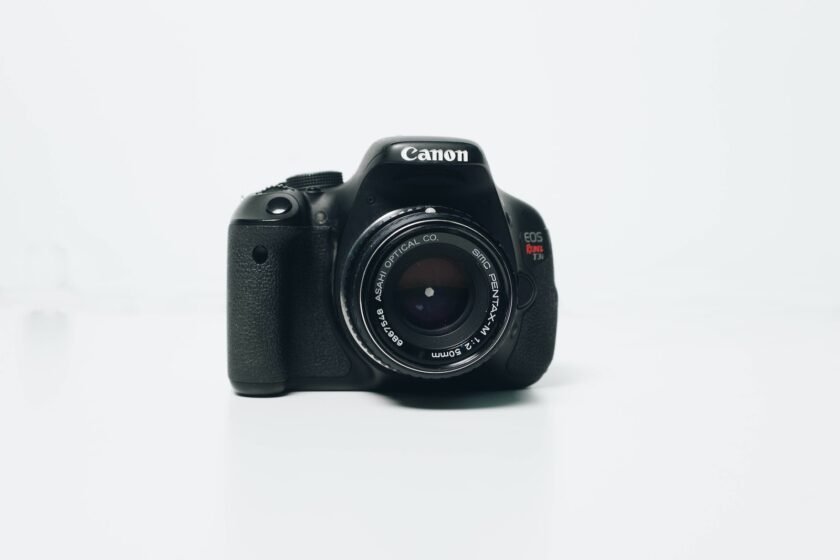Are you a photography enthusiast looking for a high-quality camera within your budget? If so, you’re in the right place. In this guide, we’ll explore the Best Cameras Under 1 Lakh and provide you with their pros and cons to help you make an informed decision.
Introduction
Choosing a camera that fits your needs and budget can be overwhelming, especially with the vast array of options available in the market. However, with careful research, you can find the best camera that fits your style and preferences.In this article, we have listed the top cameras under 1 lakh to help you narrow down your search. We’ve also outlined the factors you need to consider before making a purchase.
Factors to Consider When Buying a Camera
Before we dive into the best cameras under 1 lakh, let’s discuss the factors you should consider when buying a camera.
- Sensor Size: The sensor size determines the image quality of the camera. A larger sensor will produce better images in low light and will have a higher resolution.
- Megapixels: A higher number of megapixels can provide you with more details in your images, but it’s not always necessary. A 24-megapixel camera is more than enough for most people.
- Lens Compatibility: It’s essential to consider the lens compatibility of the camera. Some cameras have a limited selection of lenses, while others have a wide range of options.
- Video Quality: If you’re interested in videography, consider a camera that offers high-quality video.
- Autofocus: A good autofocus system is crucial for capturing sharp and clear images.
Best Cameras Under 1 Lakh
1. Canon EOS M50 Mark II
The Canon EOS M50 Mark II is a popular mirrorless camera that offers a 24.1-megapixel APS-C CMOS sensor. It comes with a flip-out touchscreen display, which makes it easy to take selfies and vlogs. The camera has an excellent autofocus system and can shoot 4K videos at 24 fps. However, it doesn’t have in-body image stabilization and has a limited selection of lenses.
Pros:
- Excellent autofocus system
- Flip-out touchscreen display
- Good image quality
Cons:
- No in-body image stabilization
- Limited selection of lenses
- No headphone jack
2. Sony Alpha A6400
The Sony Alpha A6400 is a mirrorless camera that offers a 24.2-megapixel APS-C sensor. It has an excellent autofocus system and can shoot 4K videos at 30 fps. The camera also offers in-body image stabilization and has a wide selection of lenses. However, the touchscreen display doesn’t flip out, and the camera is relatively expensive compared to other options on this list.
Pros:
- Excellent autofocus system
- In-body image stabilization
- Wide selection of lenses
Cons:
- Expensive
- No flip-out touchscreen display
3. Nikon Z50
The Nikon Z50 is a mirrorless camera that offers a 20.9-megapixel APS-C sensor. It has an excellent autofocus system and can shoot 4K videos at 30 fps. The camera offers in-body image stabilization and has a wide selection of lenses. However, the camera’s battery life is relatively short, and it doesn’t have a headphone jack.
Pros:
- Excellent autofocus system
- In-body image stabilization
- Wide selection of lenses
Cons:
- Relatively short battery life
- No headphone jack
4. Fujifilm X-T30
The Fujifilm X-T30 is a mirrorless camera that offers a 26.
Certainly, my apologies. Continuing on with the article:
4-megapixel APS-C X-Trans CMOS 4 sensor. It has an excellent autofocus system and can shoot 4K videos at 30 fps. The camera has a retro design and offers a wide range of film simulations. However, it doesn’t have in-body image stabilization and has a relatively short battery life.
Pros:
- Excellent autofocus system
- Retro design
- Wide range of film simulations
Cons:
- No in-body image stabilization
- Relatively short battery life
5. Panasonic Lumix G95
The Panasonic Lumix G95 is a mirrorless camera that offers a 20.3-megapixel Four Thirds sensor. It has an excellent autofocus system and can shoot 4K videos at 30 fps. The camera offers in-body image stabilization and has a wide selection of lenses. However, the camera’s battery life is relatively short, and it doesn’t have a headphone jack.
Pros:
- Excellent autofocus system
- In-body image stabilization
- Wide selection of lenses
Cons:
- Relatively short battery life
- No headphone jack
6. Olympus OM-D E-M10 Mark IV
The Olympus OM-D E-M10 Mark IV is a mirrorless camera that offers a 20.3-megapixel Four Thirds sensor. It has an excellent autofocus system and can shoot 4K videos at 30 fps. The camera offers in-body image stabilization and has a wide range of lenses. It also has a flip-out touchscreen display and a compact design, making it easy to carry around. However, it doesn’t have a headphone jack, and the battery life is relatively short.
Pros:
- Excellent autofocus system
- In-body image stabilization
- Flip-out touchscreen display
Cons:
- Relatively short battery life
- No headphone jack
Comparison of the Best Cameras Under 1 Lakh
Here’s a quick comparison of the best cameras under 1 lakh:
| Camera | Sensor | Megapixels | Video Quality | Autofocus | Image Stabilization | Price |
|---|---|---|---|---|---|---|
| Canon EOS M50 Mark II | APS-C CMOS | 24.1 | 4K/24fps | Excellent | No | Rs. 62,995 |
| Sony Alpha A6400 | APS-C | 24.2 | 4K/30fps | Excellent | Yes | Rs. 79,990 |
| Nikon Z50 | APS-C | 20.9 | 4K/30fps | Excellent | Yes | Rs. 72,995 |
| Fujifilm X-T30 | APS-C X-Trans CMOS 4 | 26.4 | 4K/30fps | Excellent | No | Rs. 89,990 |
| Panasonic Lumix G95 | Four Thirds | 20.3 | 4K/30fps | Excellent | Yes | Rs. 89,990 |
| Olympus OM-D E-M10 Mark IV | Four Thirds | 20.3 | 4K/30fps | Excellent | Yes | Rs. 64,990 |
Conclusion
Choosing the best camera under 1 lakh can be a tough decision, as each camera has its own unique set of features and drawbacks. Ultimately, it comes down to your specific needs and preferences as a photographer. If you’re looking for a camera with excellent autofocus and a flip-out touchscreen display, the Canon EOS M50 Mark II might be the right choice for you. If in-body image stabilization is a priority, the Sony Alpha A6400 or Nikon Z50 would be a better option. If you want a retro design and a wide range of film simulations, the Fujifilm X-T30 could be the perfect fit. And if you’re looking for a camera with a flip-out touchscreen display and in-body image stabilization, the Olympus OM-D E-M10 Mark IV is a solid choice.
No matter which camera you choose, make sure to do your research and read reviews from other photographers to ensure that you’re making the best decision for your specific needs.
FAQs
- What is the difference between APS-C and Four Thirds sensors?
- APS-C sensors are larger than Four Thirds sensors, which generally results in better image quality and low light performance. However, Four Thirds sensors are typically more compact and lighter, making them a good choice for travel and outdoor photography.
- Does the Canon EOS M50 Mark II have a headphone jack?
- No, the Canon EOS M50 Mark II does not have a headphone jack.
- Can all of these cameras shoot 4K video?
- Yes, all of these cameras can shoot 4K video.
- Which camera has the longest battery life?
- The Nikon Z50 has the longest battery life of the cameras on this list.
- Are these cameras suitable for professional photography?
- Yes, these cameras are suitable for professional photography, depending on your specific needs and preferences.

As an architecture and interior designer, I am passionate about creating spaces that inspire and delight those who inhabit them. With over a decade of experience in the industry, I have honed my skills in both the technical aspects of design and the art of crafting beautiful, functional spaces.
After earning my degree in architecture, I began my career working for a prestigious firm where I was exposed to a wide range of projects, from commercial buildings to high-end residential properties. During this time, I developed a keen eye for detail and a deep appreciation for the importance of form and function in design.
In recent years, I have struck out on my own, founding my own design studio where I have been able to further explore my passion for interior design. I believe that a well-designed space can transform the way people live and work, and I take pride in working closely with clients to understand their needs and create spaces that exceed their expectations.
Throughout my career, I have been recognized for my innovative and creative approach to design, and have been honored with a number of awards and accolades. When I’m not working on design projects, you can find me exploring the outdoors or seeking inspiration in the world around me.



